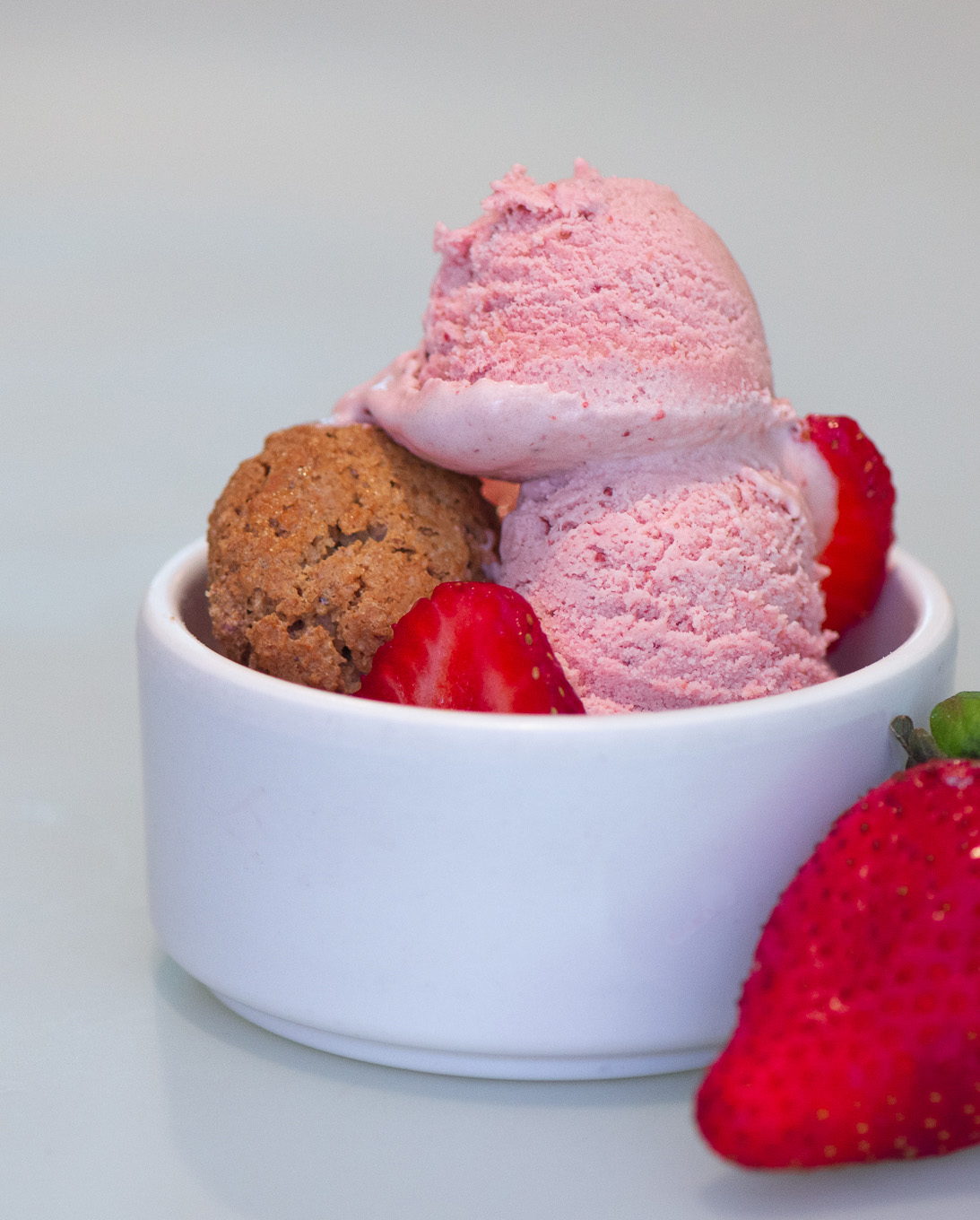With the advent of fall, those fresh, plump, sweet strawberries that graced market displays mid-summer are hard to come by. So, if you haven’t already gotten your strawberry fix for the year, here is an idea: Roast your strawberries. The roasting deepens the flavor of even second-tier berries.
For an added pop of flavor, drizzle a bit of your best balsamic vinegar over the strawberries before you roast them. The syrupy balsamic sweetens the berries.
Balsamic, by the way, has been made for about a thousand years, although the term balsamic vinegar wasn’t widely used until the 18th Century. Originating in the Modena and Reggio Emilia regions of Italy, early balsamics were the product of very limited craft production. Their cost and scarcity kept the vinegar mostly on the tables of the nobility where it was valued as a specialty vinegar suitable only for those rarefied nobles with exquisite palates. At the time, the vinegar was known as Noble’s Vinegar to distinguish it from the Commoner’s Vinegar that was consumed by the rest of the region’s population. Interestingly, it was Napoleon’s armies who changed that dynamic when they invaded Modena in 1796 and subsequently pillaged the estates of the region’s nobles. In the process, precious kegs of Noble’s Vinegar were “liberated” and sold, thus spreading awareness of the vinegar across Europe.
What makes balsamic vinegar so special? The production process is lengthy and the amount of balsamic produced is relatively small. Balsamic is made from grape pressings that are boiled and reduced to a syrup. The syrup is then aged (and its volume reduced) for at least twelve years (more for the really good stuff) in a succession of wooden kegs–chestnut, cherry wood, ash, mulberry and juniper–with each wooden keg adding a bit of distinctive flavor.
Here is an interesting short video that describes the process of making balsamic: How Balsamic Is Made. If you are a curious foodie (and who isn’t?), this video is worth your time to watch.
Why are some balsamics so expensive? The price of balsamic reflects the length of time that the balsamic has been aged. Amazon is offering a bottle of Giusti 100 for a whopping $975.93. The Giusti has been aged for at least 100 years and the label is engraved in 24-carat gold. (The Giuseppe Giusti Company is the oldest vinegar producer in the world. They opened their doors in 1603.) It’s a 3.4 fluid ounce bottle. That’s $287 per fluid ounce. Wow! That’s a bargain, by the way. Another site is selling the same bottle for $1199.99.
Here is an excellent Balsamic Roasted Strawberry Ice Cream recipe.
Ingredients
- 1 pound fresh strawberries
- 4 T. balsamic vinegar
- 4 T. sugar
- 1/2 to 3/4 C. granulated sugar
- 2 C. cream
- 1 C. half and half or 2% milk
- 1 t. pure vanilla extract or vanilla paste
Instructions
- Pepare your fresh strawberries by washing the berries, removing the green stems, and drying the berries. Toss the berries with the sugar and balsamic vinegar and place the berries on a cookie sheet in a single layer. Bake at 300 degrees F. for 30 minutes. Remove the berries from the oven and cool.
- Once the berries have cooled, blend them until you they are smooth (or coarsely chop them). Be sure to scrape any remaining balsamic glaze into the berries. Put this berries in your refrigerator overnight to allow the flavors to bloom.
- The next day, stir sugar, cream, and half and half (or milk) together with the vanilla. Add the strawberries to the cream mixture. Process in your ice cream maker according to the directions for your machine. (As an alternative, you can stir some sliced or chopped fresh strawberries into the batter before your process your ice cream.)
This ice cream recipe was adapted from one that appears on the Barbara Bakes site. You can find it here:Barbara Bakes.


 Save Recipe
Save Recipe
